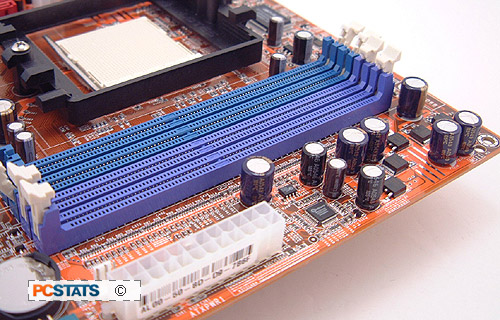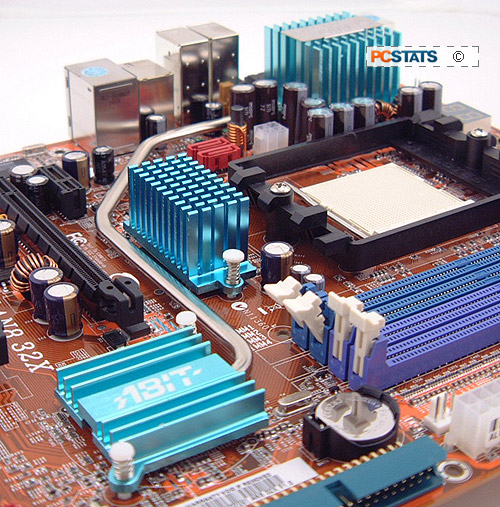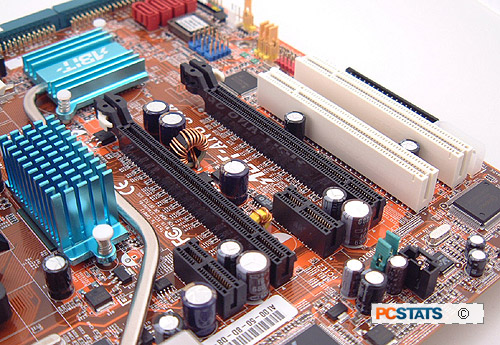The nVIDIA nForce4 SLI and nForce4 SLI x16
chipsets are very close feature wise. There are a few notable differences; first the new
nForce4 SLI x16 is a combination of two chipsets, an nForce4 SLI Southbridge and C51D
Northbridge.
Secondly, the AMD version of the nForce4 SLI x16 supports up
to 38 PCI Express lanes. That figure is effectively double that of the
first generation nForce4 SLI chipset, it dished out 20 PCI Express lanes in total. Conversely, the
nVidia nForce4 Intel Edition SLI x16 has 40 PCI Express lanes available to it,
but in either case there are 16 PCI Express lanes dedicated to each of the two
videocard slots.

This obviously means that when running two nVIDIA
videocards in SLI, both will have access to the full 16 PCI Express lanes their
little silicon hearts desire. Cutting through the PR hype for a moment, this
really doesn't make much of a difference right now, but... future videocards
that require more PCI Express bandwidth
will not be held up as happened with the original nForce4 SLI.
The rest of
the nVIDIA nForce4 SLI x16 features remain the same as with the original
chipset. The core logic supports four IDE devices, four Serial ATA II devices with RAID
modes 0, 1, 0+1 and RAID 5, a hardware firewall as well as a
direct connection to the Southbridge for the Gigabit network card.
ABIT Outside Thermal
Exhaust System:
The nForce4 SLI x16 chipsets generates a fair amount of
heat, and while fans are nice for keeping thing cool they make noise. Noise is
bad, baaad! If there was ever a bandwagon to jump in, it is the "heatpipe cooled
core logic chipset bandwagong." ABIT is no different, and the ABIT AN8 32x utilizes the ABIT OTES
cooling system which is essentially a long heatpipe that dumps the
heat from the nVidia chipset at the rear of the computer on a special MOSFET
heatsink.

The nForce4 SLI southbridge comes in contact with a heatpipe that snakes over the surface towards the power MOSFETs just behind the CPU socket. Things are topped off with an aluminum heatsink, without a fan. The heatpipe moves the heat to the larger heatsink next to the processor cooler which works with system airflow so there is no extra noise added.
|
experts tip: quiet down that cpu fan |
|
users who demand quiet performance have a lot of control over things with the abit an8 32x motherboard. in the microguru options, go to abit eq and from there down to the cpu faneq control. in that section, you can adjust the temperatures at when the fan reacts (high/low temp settings) as well as the voltage that the fan receives. this allows users to fine tune the speed of the fan on the processor heatsink which can allow for a much quieter system. |
| Comments and Feedback? Suggest a Tweak. |
If you're using a board like this, it is very important to ensure that fan-based CPU heatsinks are used. If the fans are removed from the system because you've adopted a watercooling rig, the principles this cooling system is based upon may not hold up, and overheating may result.

The nVidia C51D Northbridge is cooled a medium sized
aluminum heatsink and does not come in contact with the heatpipe. It is also
designed to be cooled with the system airflow and enthusiasts are advised to
have good airflow in their case if they want to use the ABIT AN8 32X or any
nForce4 x16 motherboard.
